Shaanxi ~ Xi ‘an, where 13 dynasties were founded, is an international metropolis, where not only historical sites, Han and Tang cultures, but also a variety of cuisines attract tourists and locals. Xi ‘an is the capital of pasta, if you come to Xi ‘an and don’t eat a bowl of Shaanxi noodles, it is like not going to the Terracotta Warriors, the Big Wild Goose Pagoda and the bell tower, it is equivalent to coming to Xi ‘an in vain.
Xi ‘an, as the capital city of Shaanxi Province, has all kinds of noodle restaurants throughout the streets, villages and alleys, and each restaurant has its own characteristics. According to incomplete statistics, there are as many as thousands of kinds of pasta in Shaanxi, and Shaanxi people’s research on pasta has reached the point of perfection!
Guanzhong Plain is a vast expanse of fertile land. It used to be the granary of the ancient capital. The development of wheat here has continued to this day. In Xi ‘an is a collection of Shaanxi pasta, so there are countless pasta restaurants. Next, let’s take stock of the top ten noodles in Xi ‘an and punch the delicious food that Xi ‘an cannot miss!
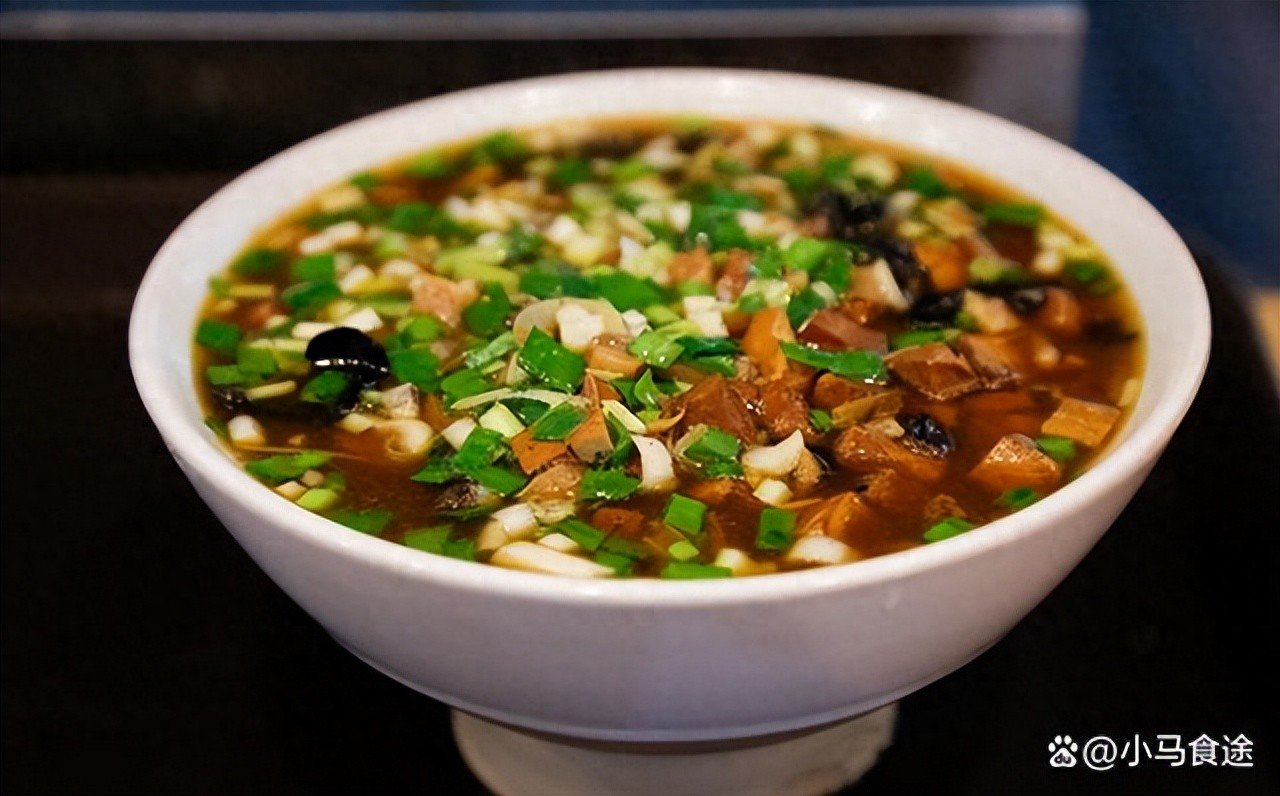
Chang ‘an Saozi noodles, now Xi ‘an Chang ‘an District, the past Chang ‘an County area of local flavor pasta. Also known as “Chang ‘an seat noodles”, “Chang ‘an affair noodles”. People in Chang ‘an District of Xi ‘an used to have the first meal of “wedding banquet and funeral banquet”. Every festival, wedding or funeral, or to entertain relatives or the annual Changan village temple fair, we must eat a bowl of Changan noodles.
The saozi noodle is the main traditional noodle of Shaanxi province and even the whole of China. The saozi is garnished with domestic ingredients and the noodles are mainly hand-rolled. In Shaanxi, northern Shaanxi and Guanzhong, this noodle is a household pasta and is often eaten.Because different places have different ways of eating, but they are basically the same.
“Chang ‘an saozi noodles” is different from other saozi noodles, with the following main characteristics:
First, dilute the sour taste. “Changan saozi noodles” sour taste light, put vinegar is to fry the saozi as a neutral flavor and spicy use, but never let the sour taste too much. The taste does not highlight the sour taste, which can better fry the “oil” in the saozi. “Changan saozi noodles” in the pork belly stir-fried “oil”, so the first taste should highlight the “salty”.
Second, a large number of chopped raw leek floating in the noodles.
“Changan saozi noodles” made into soup, to sprinkle a large number of chives broken, this is not only “finishing touch”, chives are extremely common public dishes, with a special strong smell. People who do not like to eat are afraid to avoid it, and people who like chives are almost inseparable from noodles, which is a very popular delicious dish in Guanzhong. The raw chives scattered into the hot soup, although it is half cooked when it is sent into the mouth, but it still retains the pure sense of raw chives, which is very suitable for the taste of Chang ‘an District and even the surrounding area.
Third, the tofu in the saozi should be the main ingredient. In the Changan saozi noodles, the good old tofu is stir-fried in advance, almost has the feeling of “oil tofu”, which makes the taste of the saozi more palatable and chewy, and more fragrant.This pot of Changan saozi noodles saozi soup, there must be a large number of tofu, it and the diced meat, ear, yellow flower, so that Changan saozi is famous.
Fourth, “soup noodle integration”. Soup is soup, noodles are noodles, this is the most healthy way to eat, a bowl of saozi noodles soup, vegetables, noodles, are the community of this bowl of noodles, eat together is the most comfortable way. “Changan saozi noodles” does not pay attention to the amount of soup, the amount of noodles, do not pay attention to eating dozens of bowls of gick, it is a natural bowl of soup noodles, eat noodles, eat vegetables, and finally drink soup, is the best Changan noodles eating method.
Changan saozi noodles, soup is not cloudy, noodles are not soft paralysis, noodles long and thin, uniform thickness, saozi refreshing, chieves floating noodles, salty and fresh oil, tendon tough and refreshing, suitable for both young and old. Therefore, eat “Chang ‘an Saozi noodles” just eat and drink, noodles can eat, the oily soup can also drink a full stomach. For dusty, hungry guests, a bowl of simple noodles is the best. Of course, this bowl of soup, with meat, taste of sweet “Chang ‘an Minced noodles”, is the most soothing. If it can further strengthen the promotion and publicity, “Chang ‘an Saozi noodles” can also become the leader of Shaanxi noodles.
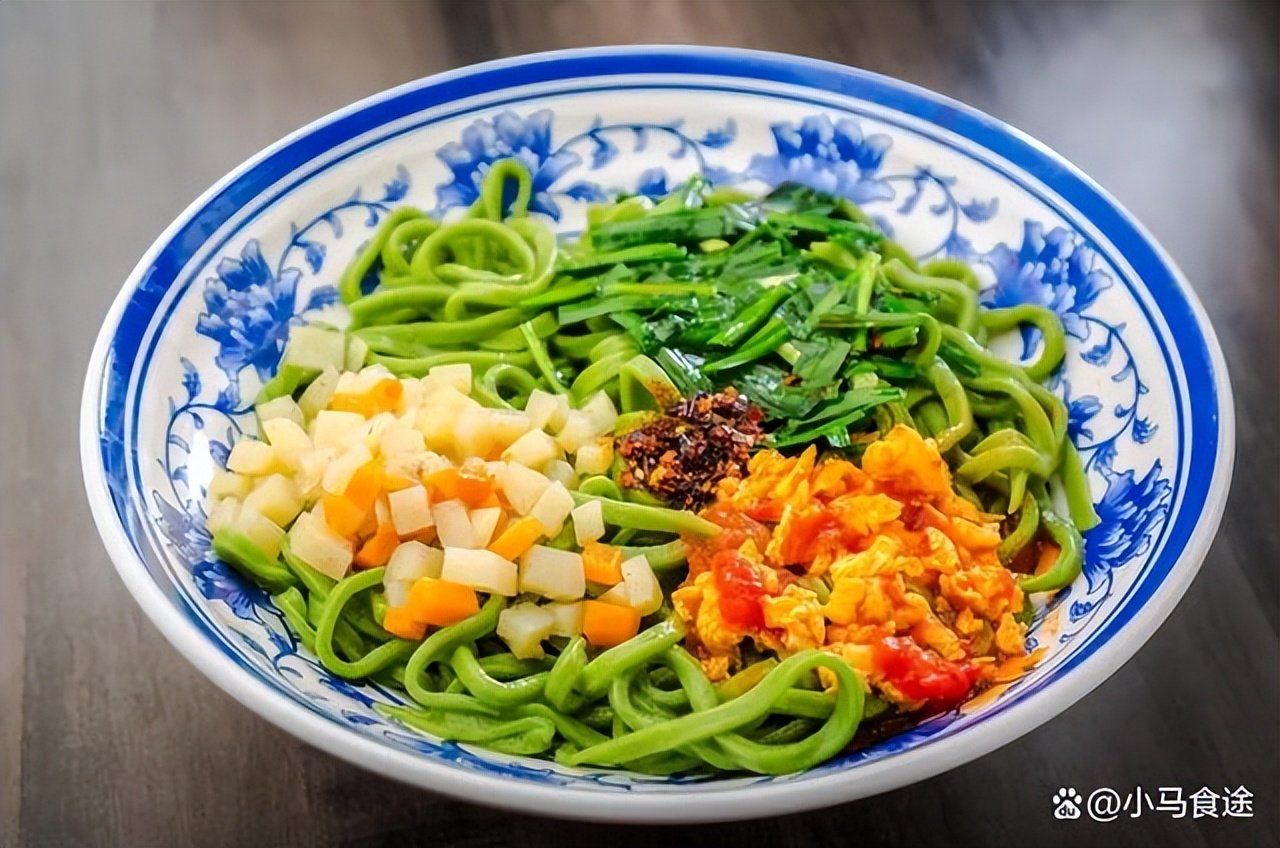
Spinach noodles, the preparation method is said to have originated in the Tang Dynasty. At first, it was made of mashed juice and flour of green sophora leaves, and later folk women improved it to use spinach leaves and flour mixed production.
The legend of spinach noodles can be traced back to the Zhenguan period of the Tang Dynasty, when the King of Nepal brought back a rare vegetable from the western cabbage country to present Tang Taizong, which later became the main raw material of spinach noodles. The production process of spinach noodles is exquisite. It is usually made of spinach juice and rolling pin. It is green in color and smooth in taste. The emperor greatly appreciated it after tasting, and from then on, spinach noodles became a palace food. Since then, spinach noodles have not only become very popular in Xi ‘an, but also gradually become a special food in Shaanxi.
Take Kun Kun spinach noodles, which is located in the facade room of No. 84 Dachecjia Lane, Nanyuanmen, Xi ‘an, as an example. The reason why his spinach noodles are very popular is that they have a good taste. First of all, it is worth mentioning that his spinach noodles, each of which is rolled out by hand with spinach juice, the green color of the pot, not the pigment deployment out of the dough, add balsamic vinegar does not change color, spinach juice knead noodles, make noodles with vinegar, the color will be slightly black), carefully look at the spinach leaves that are kneaded into the noodles. Real hand-rolled spinach noodles, not only have the texture, dry eating can also taste the light spinach fragrance.
Of course, a bowl of delicious spinach noodles, only work on the flour naturally is not enough, noodles do again seriously, saozi also need to make aroma. With a special formula to boil three or four hours out of the pot of beef minced meat, according to more than ten years of experience out of the three kinds of vegetable minced meat, is the essence of spinach noodles.The beef is soft and delicious, and the vegetables are delicious. It is perfect for spinach noodles.
Have to mention the finishing touch is its home spilled red oil spicy. I do not know what magic the boss gave the spicy, put in the noodles can instantly make this bowl of noodles to a higher level, is simply the smell of people can not extricate themselves. Even the ones who come here and can’t eat spicy. To eat noodles here also need to put the spicy on the table, as much as possible into the noodle bowl, a red bowl of noodles looked at the appetite.
Noodles, saozi, oil spicy, three seemingly simple things, but by the boss so a combination to achieve this bowl of fragrant spinach noodles. Noodles smooth and strong way, saozi salty moderate, spicy sweet and not burn the stomach, a noodle to eat into the mouth, immediately let people happy to close their eyes to taste.
In addition to Kun Kun spinach noodles, there are also Old Yan’s handmade green vegetable noodles, which are loved by the majority of diners for their unique green noodles and refreshing taste. The restaurant also insists on using fresh vegetable juices and noodles, giving the noodles a natural green color that is not only beautiful but also nutritious. With the carefully modulated soup base and various vegetable ingredients, a bowl of food, as if the whole body and mind are surrounded by fresh natural breath.
Of course, spinach noodles are more than the above two in Xi ‘an, and there are more hidden small noodle shops with good taste, which deserve to be appreciated by the public and promoted by the public. Punch card Xi ‘an, there must be a bowl of green spinach noodles!
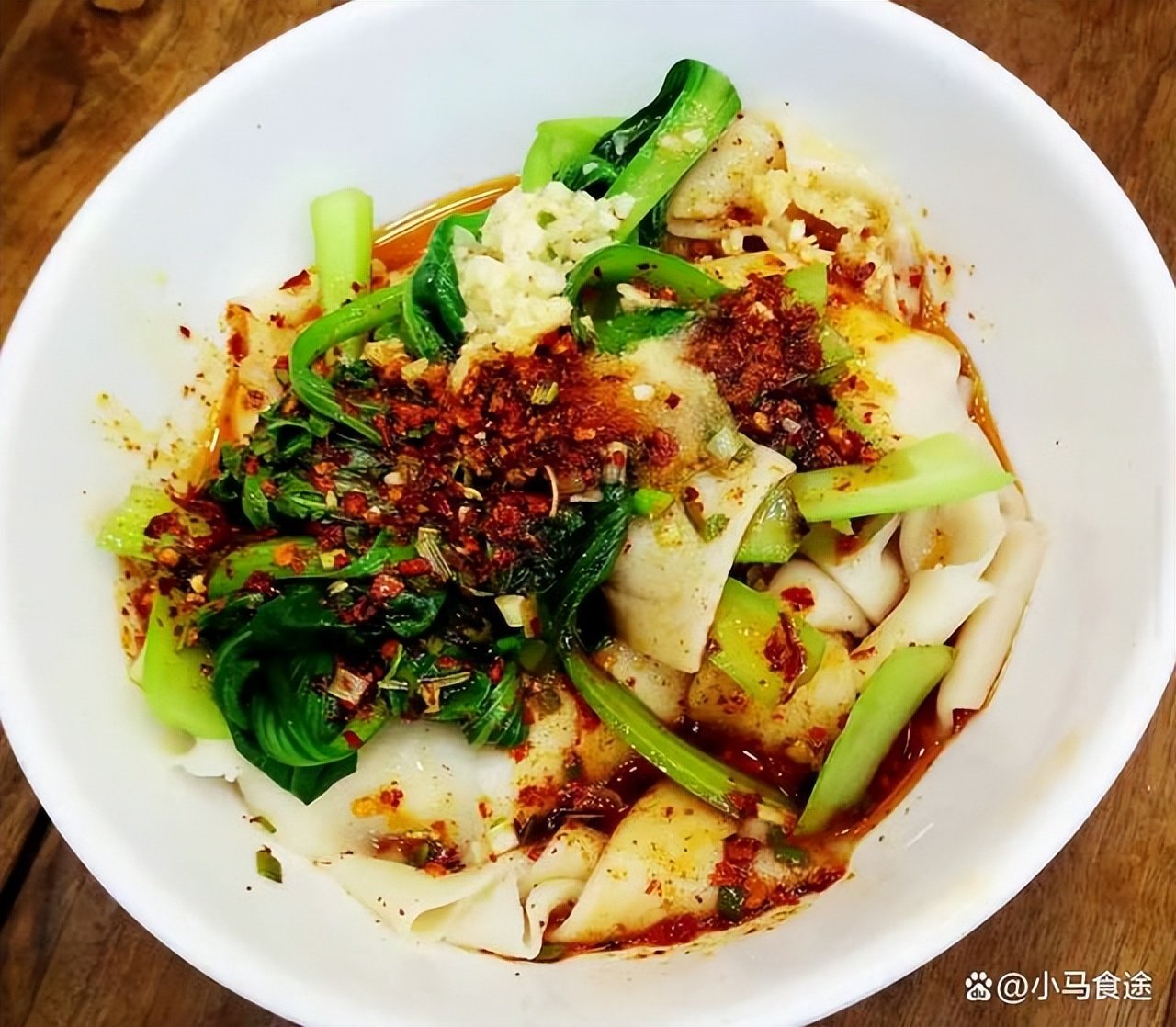
Youpu noodles, the representative name of noodles in Xi ‘an, and even Guanzhong and Shaanxi, and the most representative pasta snack in Xi ‘an, is said to date back to the Tang Dynasty, when it was called “water-led noodles”. In the Ming and Qing dynasties, it has penetrated into Guanzhong and its surrounding areas and become an indispensable part of people’s life. With the passage of time and inheritance, Youpo noodles gradually evolved into today’s household delicious pasta.
There is another saying that the history of oil spilled noodles is said to date back to an earlier period. It is said that it originated in Qin Dynasty, and was initially served as the royal food of Qin Shihuang. Later, it was gradually introduced into the people and gradually became a household food in Shaanxi. After thousands of years of inheritance and improvement, this food has become more and more popular among people.
Another version says that you Pao noodles are a combination of Sichuan pepper, created by a chef. According to legend, in ancient times, an official brought back a Shaanxi cook from Sichuan. In order to cater to the taste of the official, the cook combined Shaanxi noodles with Sichuan chili peppers to create noodles with oil and pepper. Since then, oil spilled noodles have become a special food in Shaanxi and spread to this day.
Nowadays, Youpo noodles are popular all over the country for their unique taste and delicious taste. Although the production process of Youpo noodles seems simple, the unique skill and patience contained in it cannot be ignored.
First of all, choose the right amount of flour, add the right amount of water and salt, and form a smooth dough to relax and wake up. Then divide into equal parts of the dosage into thin slices, cut into strips and put into boiling water to cook. Next, the key step is to pour oil, put salt, chili powder, onion, garlic and other spices in the bowl, and pour hot canola oil. The aroma emitted during this process is mouthwatering, and it is impossible to resist its temptation.
Pick up a piece of noodles into the mouth, the feeling of sinewy, smooth will be fascinating. The perfect combination of seasoning and noodles creates a unique flavor that is unforgettable. Noodles are chewy, uniform thickness, sprinkled with oil, not burnt, not spicy mouth, only tangy fragrance.
Youpo noodles can be seen everywhere in the streets of Xi ‘an, Youpo noodles feature four in one, the perfect oil spilled, meat saozi, tomato eggs and special sauce, four ingredients perfectly integrated together, whose taste is not sudden, the flavor level is clear, the meat is large and much, it is wonderful to eat! In the TV drama “Bailu Yuan”, Zhang Jiayi holds a large porcelain bowl and eats the red and fragrant Youpo noodles, which will feel particularly fragrant across the TV screen!
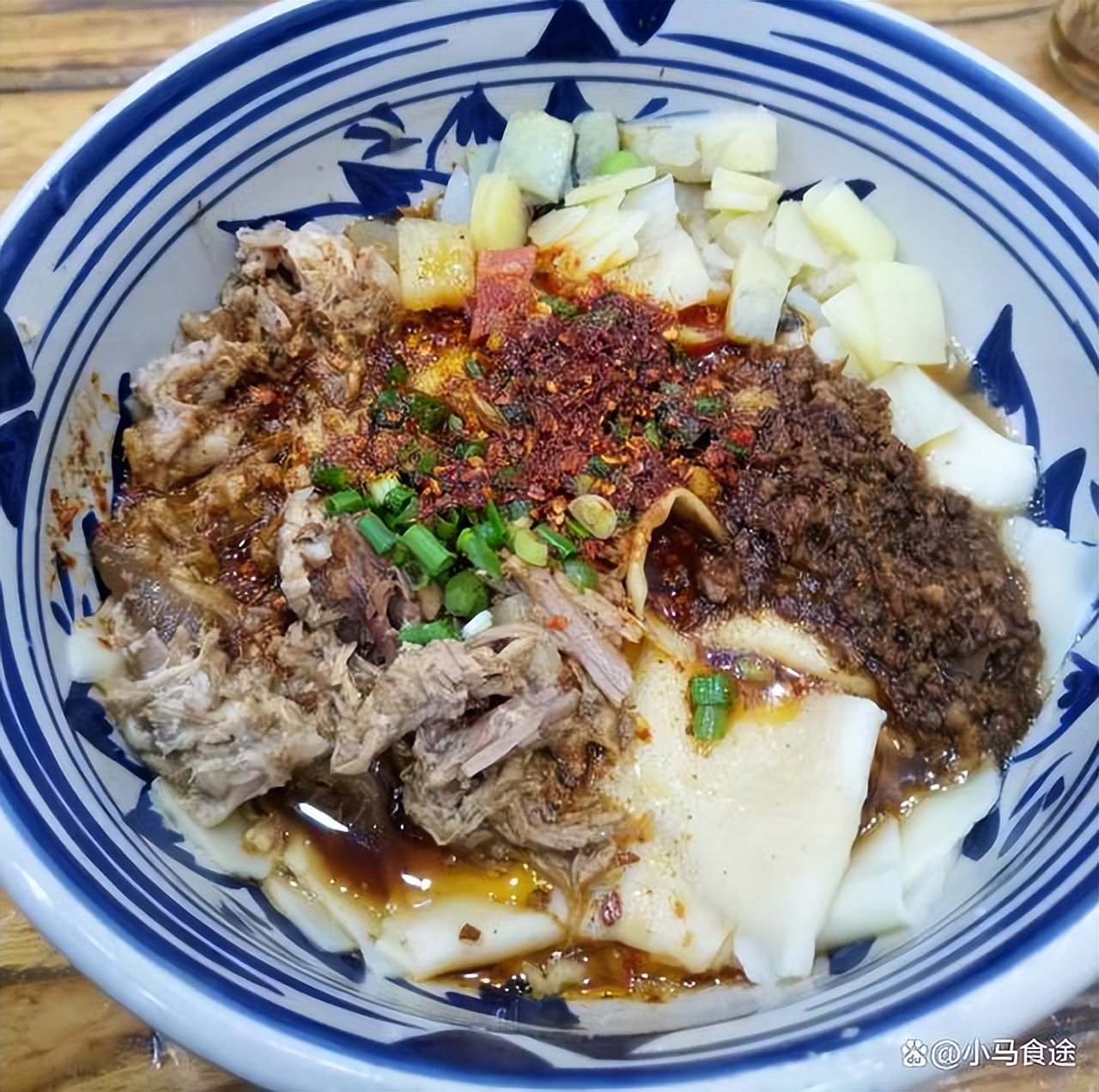
Waxed meat pull noodles, Xi ‘an Liu Ji waxed meat pull noodles, the best in Xi ‘an pasta, this has been selected by Daniel Wu Yanzu, known as the first waxed meat pull noodles in Xi ‘an. With its thick and strong noodles and soft and rotten waxy meat, it is loved by the majority of diners.
Pull noodles is an indispensable staple food in Shaanxi. It has a unique shape and a strong taste. It is paired with fat and thin meat that melts in the mouth, and then drizzled with rich bacon juice, a bowl of meat pull noodles with wax juice can be presented in front of you. Every bite is the ultimate taste delight.
Liu Ji wax juice meat pull noodles, this shop is located in Dachecjia Lane No. 33, in addition to wax juice meat Jiamo, wax juice meat pull noodles are also very characteristic. The store’s popularity is underscored by a photo of Daniel Wu at the time of his arrival.
The production of waxed meat has a long history, which is said to originate from the “stains” in the “Rites of Zhou”. After several historical periods of evolution, its production techniques have been passed down from generation to generation in Xi ‘an.
The signature waxed meat noodle, as the name suggests, contains waxed meat, surprisingly with chives, very neat but great experience. Pull the noodles into large pieces, and when the noodles are served, you need to pick up your chopsticks to evenly stir the fat and lean waxed meat and fried chives. The delicate waxy meat is evenly surrounded on the surface, giving off an attractive aroma of meat and noodles. The meat is salty and sweet, the meat is not hard, the noodles are elastic, smooth and chewy, and a bowl is not enough! Xi ‘an tourism must eat one of the characteristics of noodles, but also Xi ‘an locals can not miss one of the delicious.
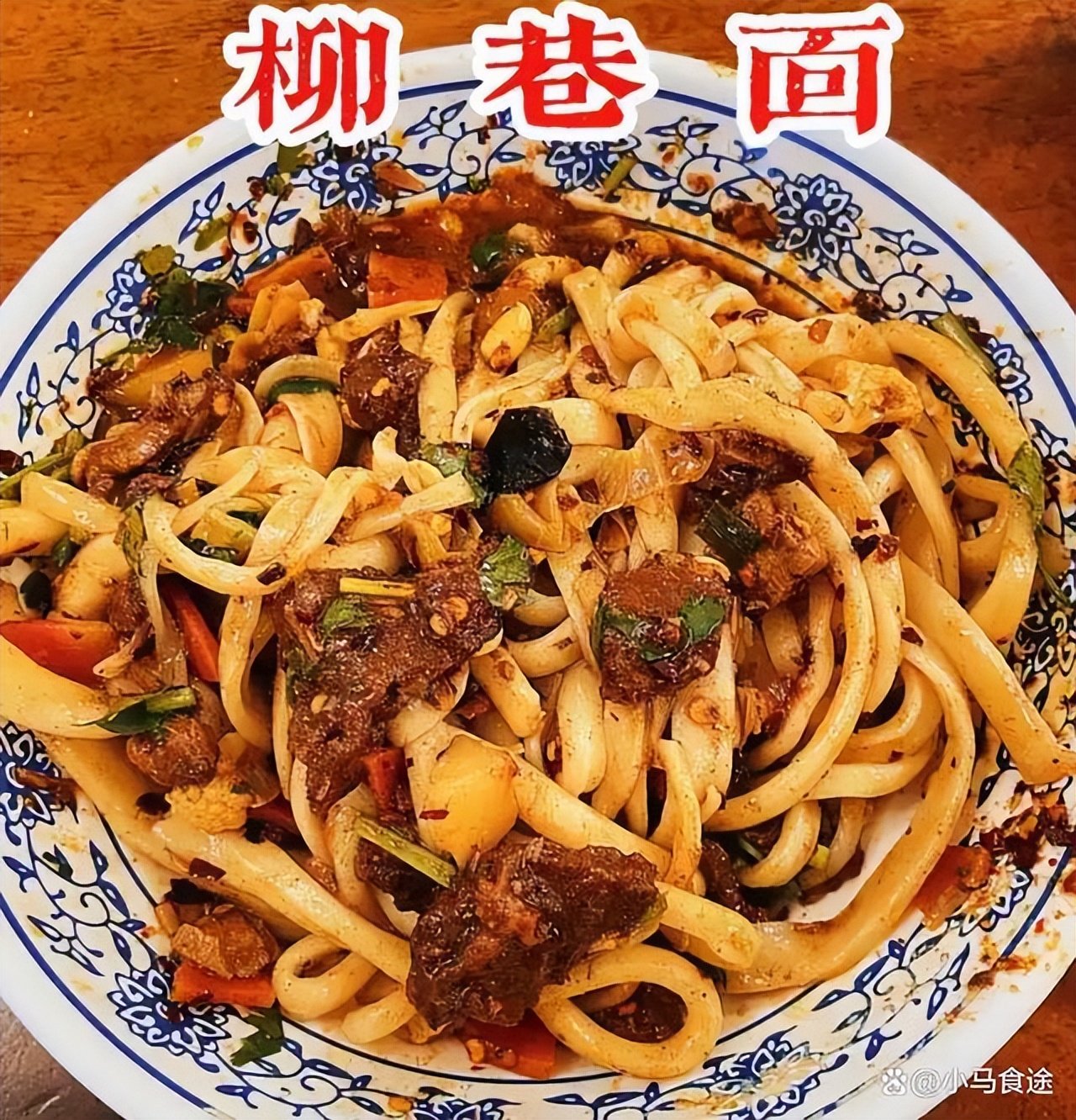
In Xi’an’s noodle scene, Liuxiang Noodles reigns supreme. Originating from North Liuxiang Lane, it gained fame in 1989 when a laid-off auntie took over the business. Located at No. 18 Anban Street, Jiqing Building, Xincheng District, Xi’an, the shop may look simple, but it exudes the warmth of everyday life. Known for its smooth, chewy noodles and rich, flavorful broth, Liuxiang Noodles has become a must-visit food destination in Xi’an, attracting countless food lovers eager to savor its unique taste.
The noodles of Liuxiang Noodles are firm yet delightfully chewy, offering a satisfying bite with every mouthful. They are paired with a carefully crafted blend of soy sauce, aromatic vinegar, and chili, topped with tender and flavorful braised beef. Each strand is evenly coated in a rich, meaty broth, presenting a glossy, enticing red hue. While its unique texture has won the hearts of many diners, the noodles’ robust and dense nature can be a bit challenging to digest for some. This distinctive characteristic has earned it the playful nickname “Liuxiang Reinforced Concrete Noodles.”
Freshly served in a thick white porcelain bowl, Liuxiang Noodles present a layer of hand-pulled noodles that appear thick, firm, and uneven, often leaving first-time visitors disappointed and skeptical about the irregularly shaped “stick-like” noodles.
However, as curious diners stir the noodles with their chopsticks, they uncover a treasure trove of ingredients hidden beneath: soy sauce, aromatic vinegar, chili oil, cilantro, cauliflower, cabbage, potatoes, bean sprouts, black fungus, fried tofu cubes, and generous chunks of braised beef. With a quick mix, the noodles, toppings, broth, and beef blend harmoniously. Paired with peeled garlic cloves, each bite—alternating between garlic and noodles—offers a satisfying chew from the noodles and tenderness from the beef, while a symphony of savory, fragrant, numbing, and spicy flavors bursts on the palate.
Before long, the bowl is nearly empty, and those with bigger appetites often order a second serving. Finishing off with a sip of the rich broth, the meal concludes with a comforting burp and a sense of pure satisfaction, embodying the Chinese saying, “the original soup helps digest the original meal.”
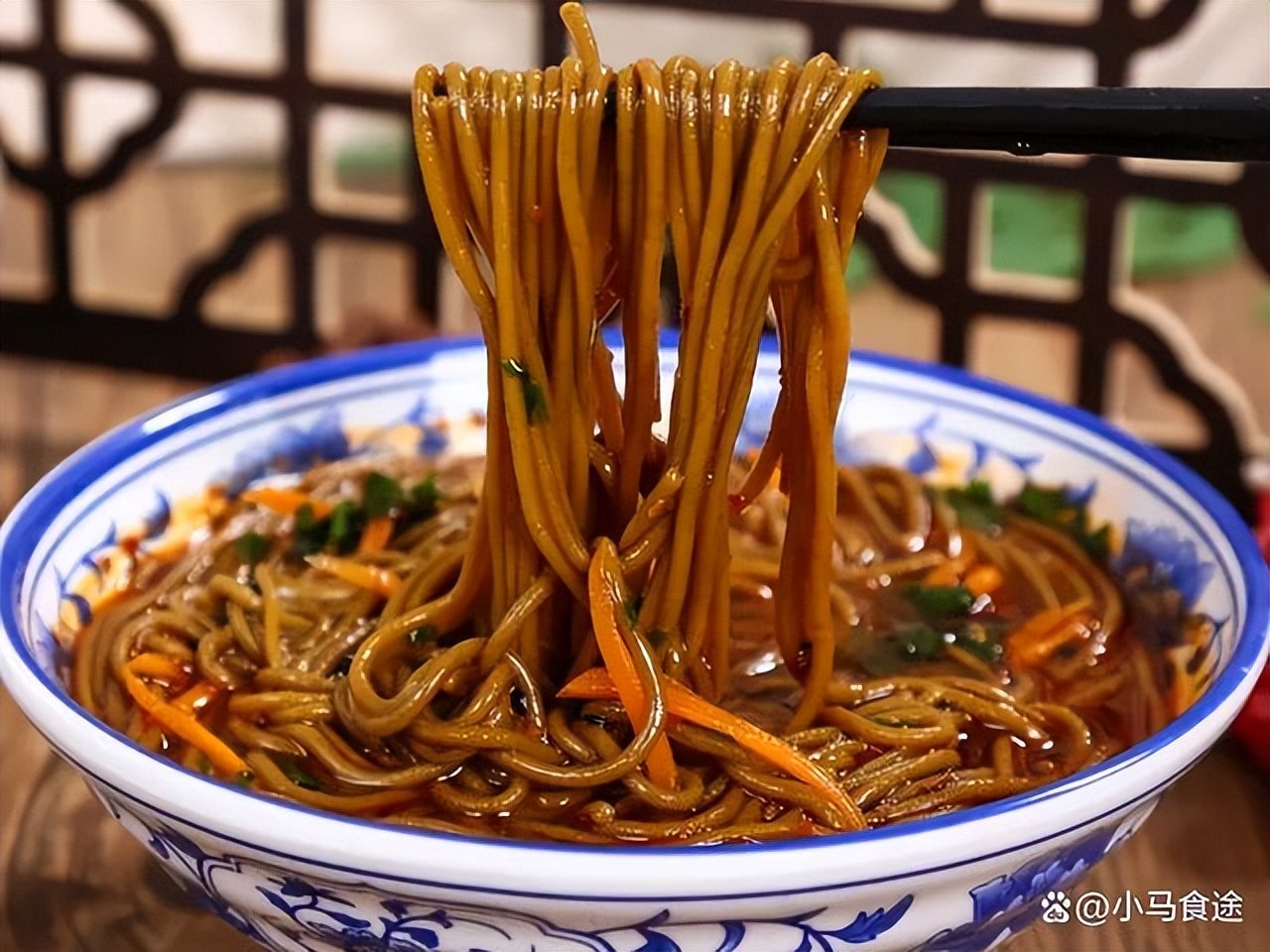
Lantian Huoluo Noodles. Lantian County in Xi’an, Shaanxi Province, is well – known as the “Hometown of Chefs” and the “Hometown of Shaanxi Cuisine”. The Lantian buckwheat Huoluo Noodles are soft, chewy, fragrant and refreshing. They have long enjoyed a great reputation in the Sanqin region and are a golden name card representing the characteristic food culture of Lantian, the hometown of chefs.
Lantian Huoluo Noodles are famous all over the world and are the forte of chefs from Lantian. They are made from buckwheat flour and rolled out with a Huoluo – making machine. Lantian buckwheat Huoluo Noodles can be eaten in two ways: cold or hot. In summer, they are usually eaten cold, with salt, balsamic vinegar, mustard, garlic juice, sesame paste, and spicy oil added. Sometimes, the chef adds a bit too much mustard. Once you take a bite, you can’t help but shudder all over, feeling as if all your senses are awakened. It’s a great food to relieve summer heat. In winter, they are mostly eaten hot. First, heat the Huoluo Noodles in hot bone broth, then pour the minced meat sauce over the Huoluo Noodles in the bowl, and sprinkle with coriander, garlic sprouts, and pepper powder. When you eat it, the soup is fresh and the Huoluo Noodles are chewy. It makes people feel comfortable all over and is suitable for people of all ages. It is definitely a unique delicacy in Xi’an and Lantian!
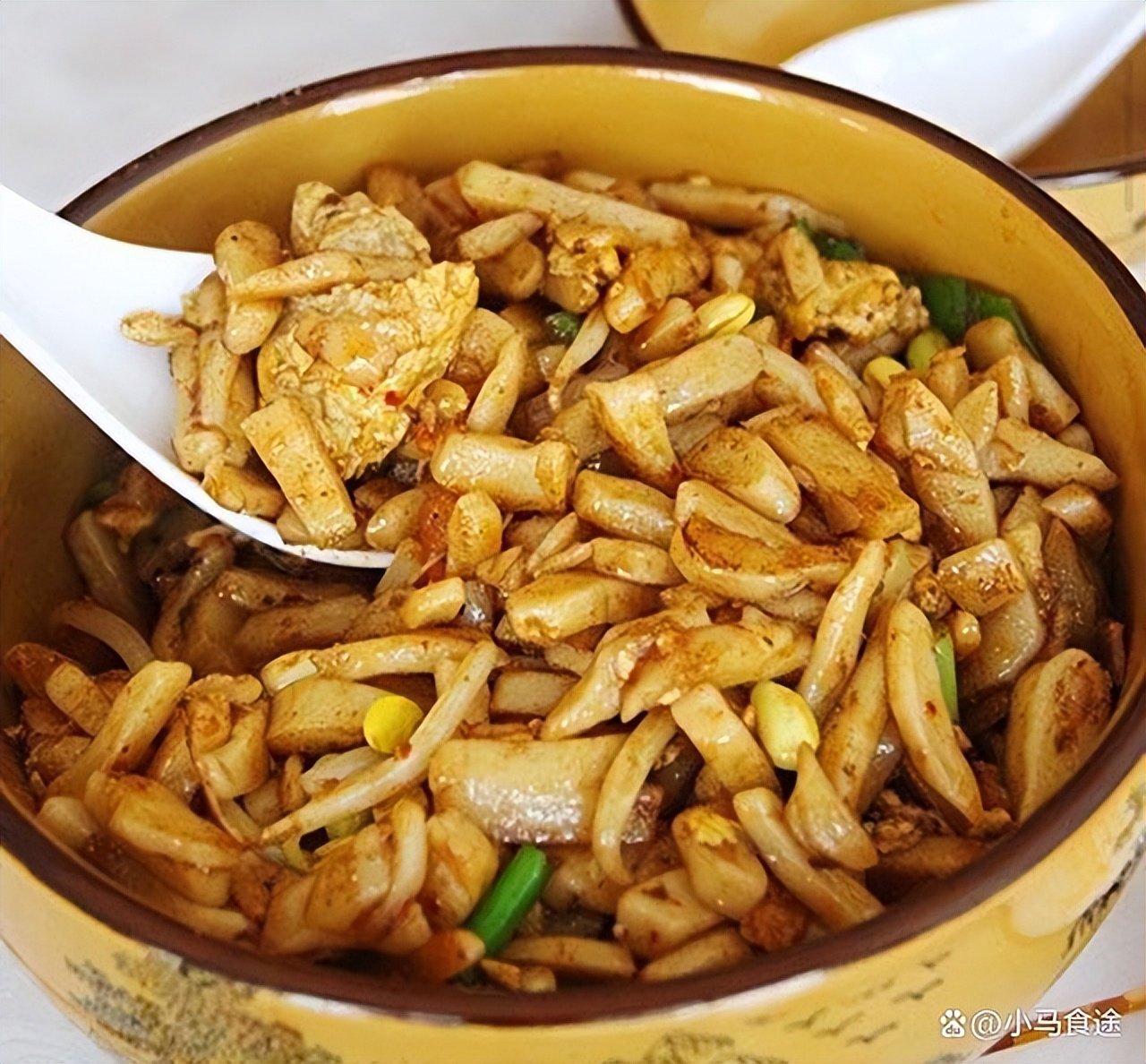
Dingding Noodles are characterized by their chewy texture, smoothness, and delicious aroma. With a beautiful color combination of white, red, green, and yellow, they not only look appealing but also taste excellent. Suitable for both meat – lovers and vegetarians, as well as people of all ages, Dingding Noodles are a well – known local snack in Bailu Plain and an outstanding representative of Xi’an’s niche noodle dishes. They have been rated as “Xi’an Exquisite Snack – Dingding Noodles” by the Xi’an Consumers Association. Customers who come to taste them out of admiration are in an endless stream, and the noodles have received much praise. Legend has it that during the Western Han Dynasty, Liu Bang led the Han army to advance into the Guanzhong area to destroy the Qin Dynasty and once stationed troops in “Bashang” (the present – day Bailu Plain). Liu Bang’s concubine, Bo Ji, was virtuous and kind – hearted. She often showed concern for the people’s livelihood. Having heard that there was a kind of food called Dingding Noodles among the folks, she had someone make it for her to taste. After trying it, she couldn’t stop praising it, saying it was delicious. Since then, Dingding Noodles have been passed down to this day. Dingding Noodles are quite similar to Mashiji, and their cooking method is extremely similar to that of the Lazy Mashiji in the Lantian folk cuisine, yet they have a unique flavor when eaten.
In Xi ‘an, there are three main ways to eat Ding Ding noodles:
1. Stir – Fried Dingding Noodles with Chili Oil
2. Fried Dingding Noodles
3. Stewed Dingding Noodles
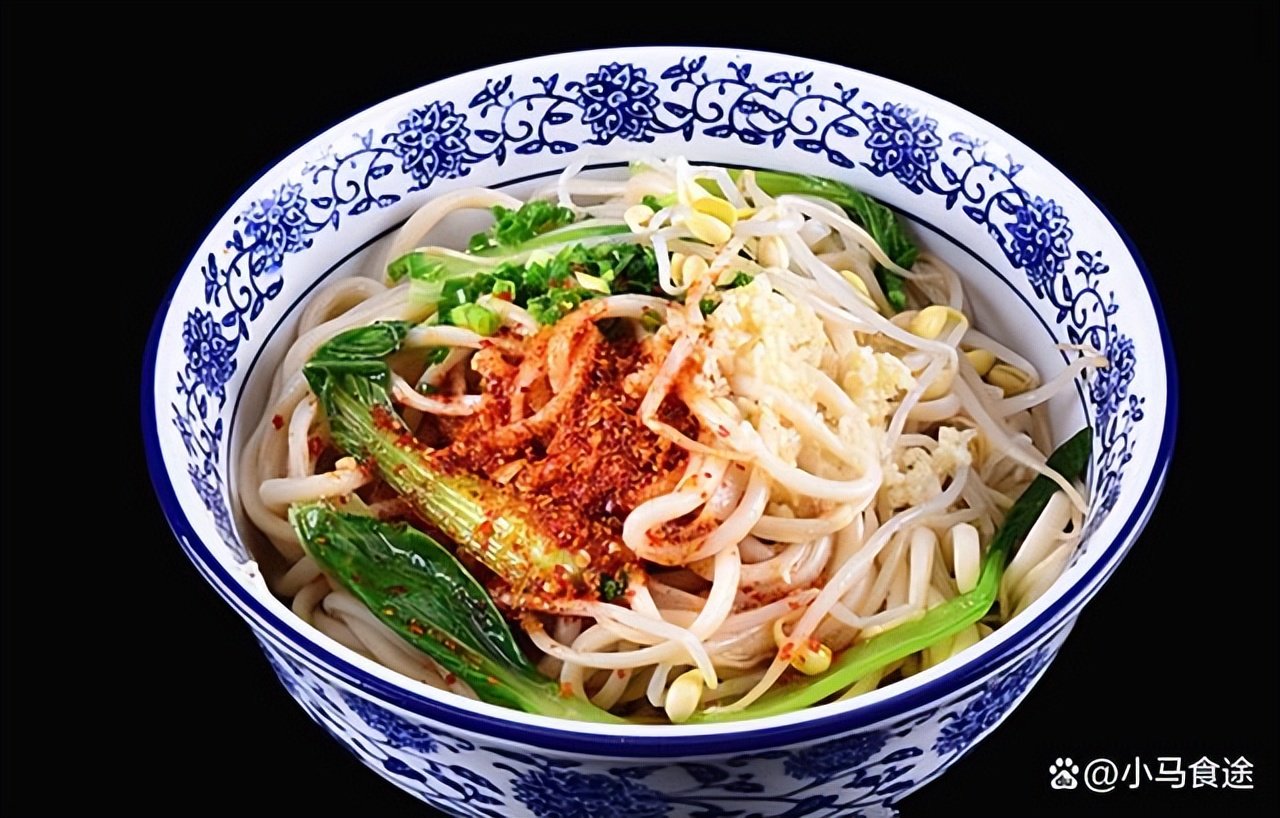
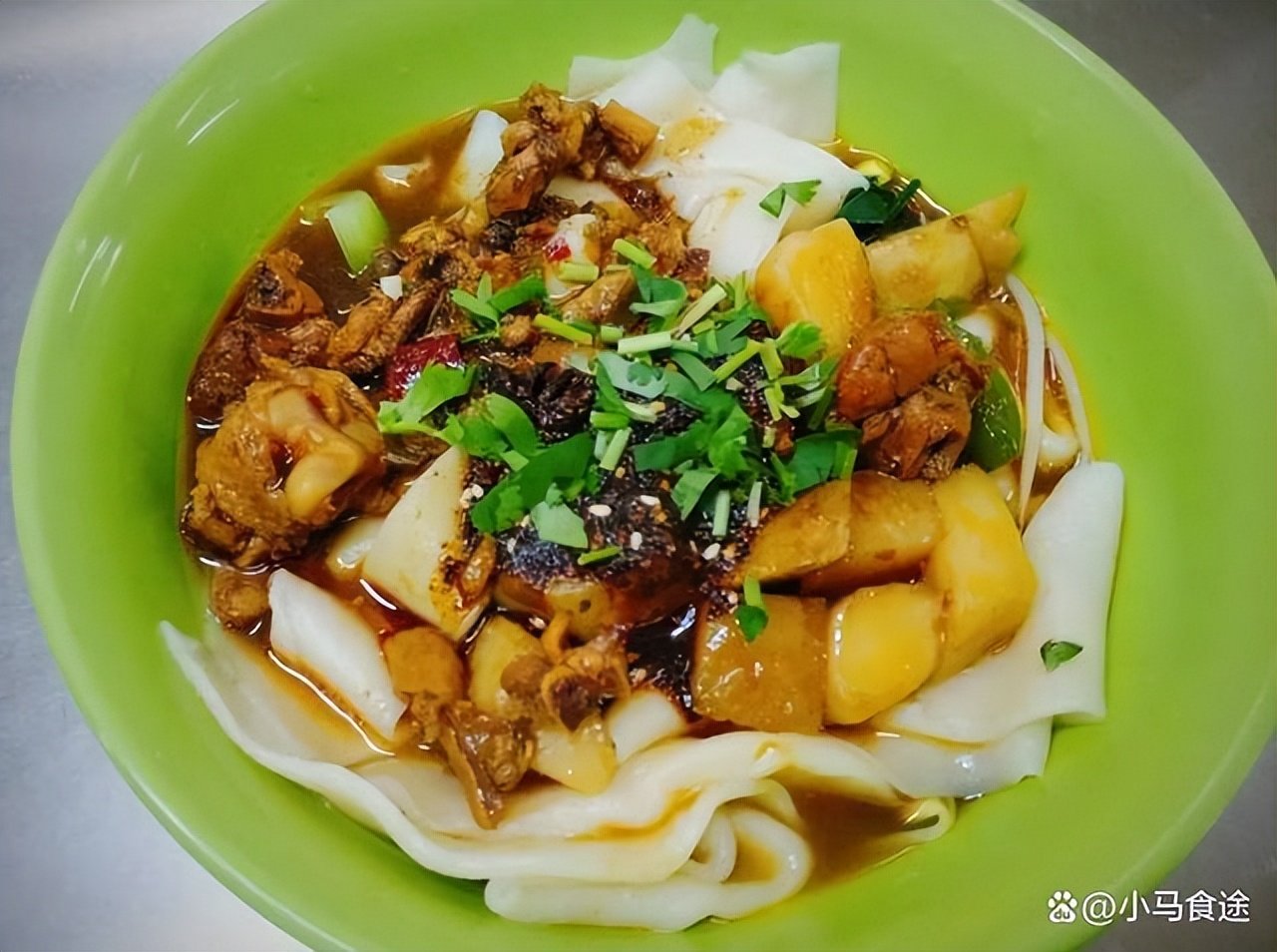
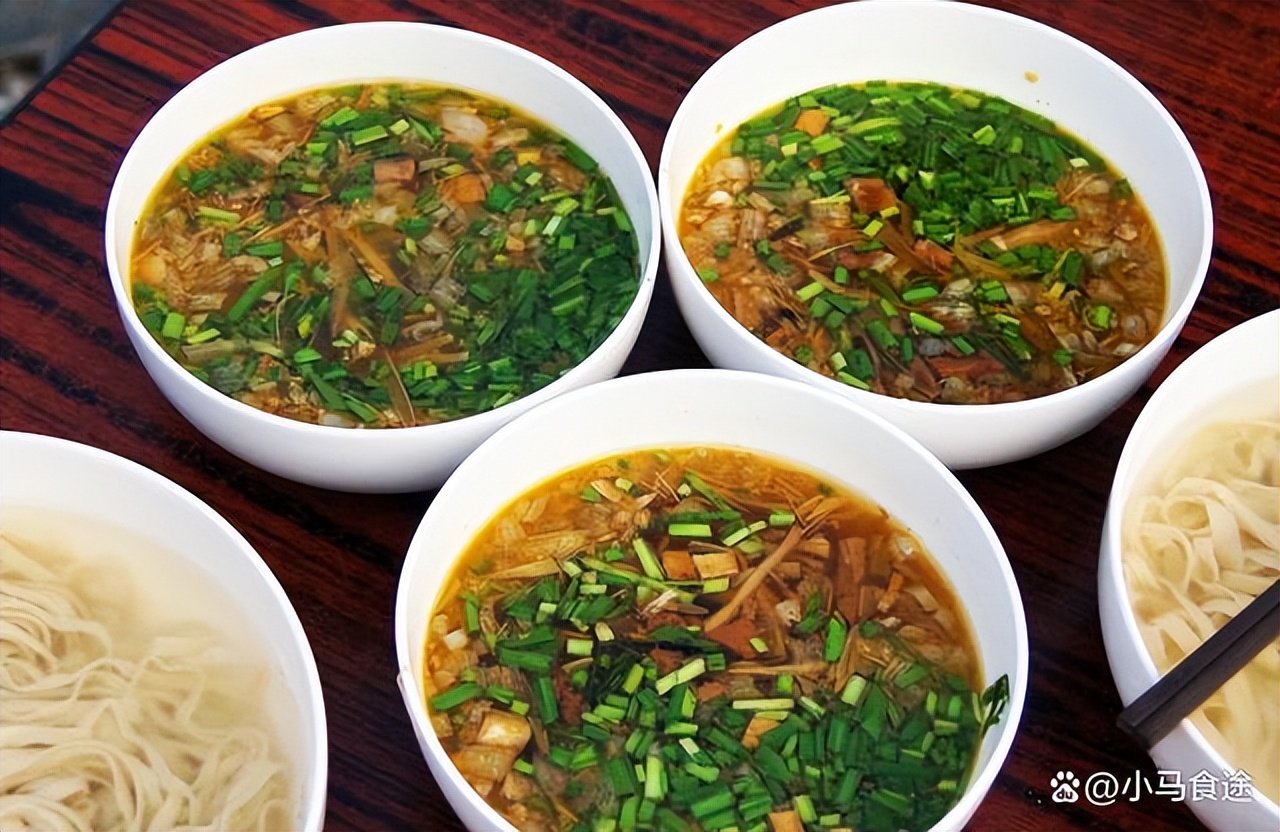
In Shaanxi, there are a wide variety of saozi noodles. According to statistics, there are at least eighteen kinds. Huxian Baitang Noodles are one of the most distinctive ones. It is not only a signature delicacy in Huyi District, Xi’an, but also enjoys the reputation of a famous Chinese snack. Compared with other noodles, it has unique charm.
The essence of Huxian Baitang Noodles lies in the delicious saozi soup. The soup is paired with daylilies, fungus, deep – fried tofu cubes, tomatoes, garlic sprouts, leeks, scallions, and carefully stir – fried diced meat (made with soy sauce, balsamic vinegar, salt, spices, ginger, scallions, and fat – lean meat). When eating, a bowl of warm – soup thin noodles is served separately. Diners pick up a chopstick – full of noodles and gently swing them in the saozi soup to let the noodles fully absorb the deliciousness of the soup. It tastes refreshing and appetizing.
According to folklore, when Jiang Ziya was flying through the clouds here, he was extremely hungry. Suddenly, he smelled the noise and the aroma of food below, so he descended to check. He saw people sitting around eating noodles and shared the food with them. After eating, he immediately felt refreshed and energetic, so he named Baitang Noodles “Longevity Baitang Noodles”.
Huxian Baitang Noodles are a rising star in the noodle world. It is a new way of eating innovated by modern Huxian people based on Qishan saozi noodles. Historical records show that it first appeared in the late Qing Dynasty. In Huxian, during festivals, weddings, funerals, birthday celebrations, or when entertaining relatives and friends, this bowl of Baitang Noodles with the characteristics of “thin, chewy, tough, sour, rich, hot, and fragrant” is indispensable.
Baitang Noodles: A Unique Gem of Shaanxi Cuisine






